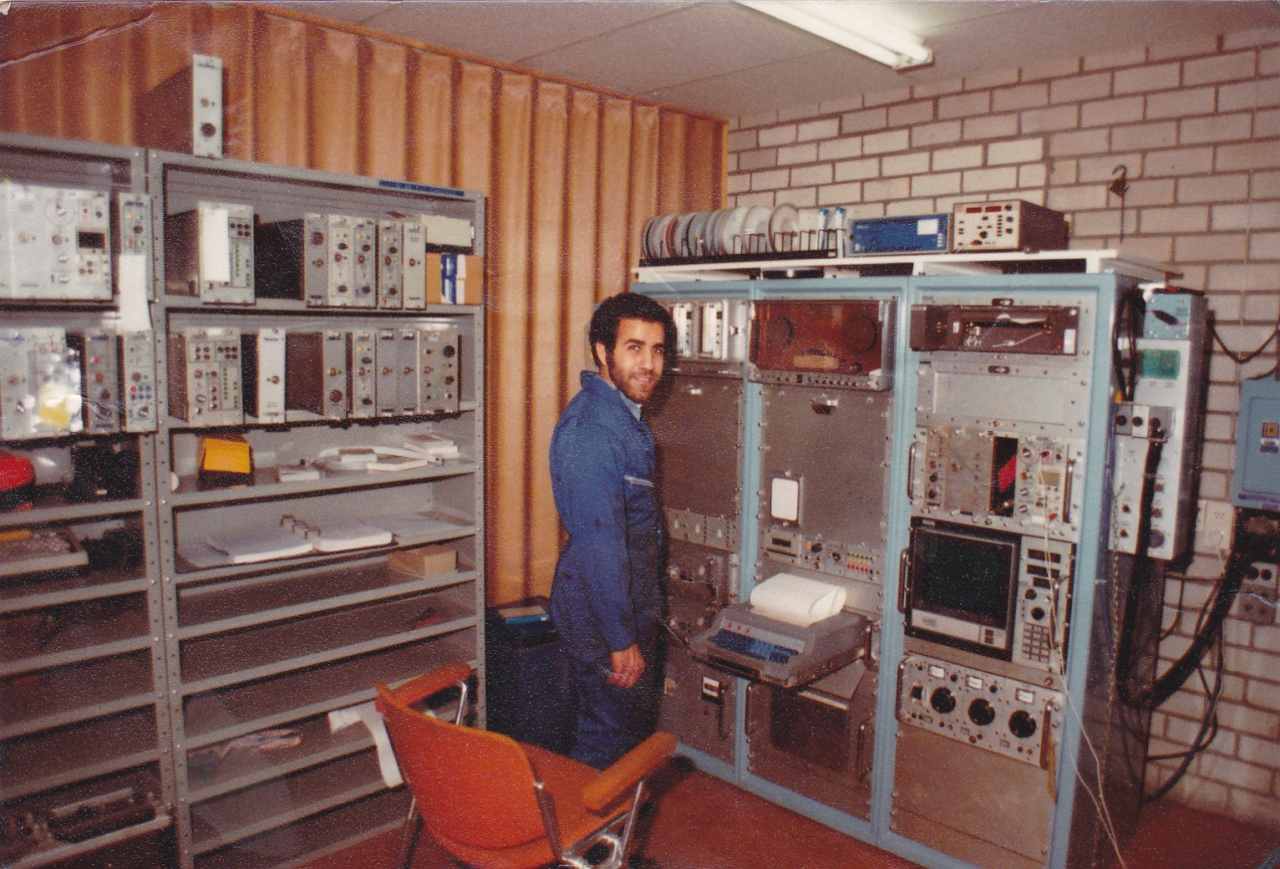When Hatem Zaghloul immigrated to Canada in 1983, he did not know that only six years later he would invent the origins of a technology that changed the world: Wi-Fi. Today, Zaghloul holds a patent certificate that calls him pegs him as the “father of wifi,” due to discovering the “WOFDM,” the original technology he then revolutionized to become the strongest force in the world, the WiFi.
Born and raised in Egypt, Zaghloul graduated from the Faculty of Engineering Cairo University in 1979.
Ever since being a student, Zaghloul excelled in sciences and mathematics. He studied electronic engineering at Cairo University, as well as applied mathematics at Ain Shams University, after which he worked as an assistant professor at the University of Calgary, the largest city in the Canadian state of Alberta.
He then obtained a master’s degree in physics from the same university in 1985 and worked as a researcher at Telus Communications from 1989 to 1993.
In an interview with Al-Arabyia, Zaghloul says that the true beginning of how Wi-Fi came to be was when he joined a Canadian telecom company after immigrating from Egypt in 1983.
The company asked Zaghloul to do research on ways to increase internet and phone speeds. At that time, all technologies were operating on the 2G service. Along with his partner Michel Fattouche, Zaghloul says he invented the 3G technology by studying the impact of electromagnetic waves which transfer data and images.
“We realized there were problems with the 2G, so we invented something called the phase estimator, which reduced irreducible errors. A company… asked us to put it in a device and try it and in theory it would work, in theory we had improved the signal by a thousand times… but it didn’t work. In reality it had improved it by 1.5 times,” Zaghloul said during a Devoxx talk in Morocco conference.
The reason for that was that the company’s technology did not suite 3G, Zaghloul says. “The devices themselves were designed by a technology available at that time: The crystals were not very accurate…” This put Zaghloul and his partner in a problem.”Engineers by training, if you find a problem you go to the book and find the solution and use it.”
So Zaghloul asked them to redesign their phones, through another technology he allegedly discovered named “WOFDM,” which later would be known as Wi-Fi.
WOFDM “theoretically gives you 3 or 4 times as much communication… but in reality gives you 10 times the communication.”
Zaghloul then obtained a patent for his invention along with Fattouche, making Wi-Fi in both the US and Canada registered in their names.
As for making WiFi a household name, that was another challenge. The two inventors tried and failed to sell the technology to leading companies such as Apple. A while later, the only offer they got was US$10,000 from an unknown company.
“Apple was going to sign but they’d already had their people working on something similar. Siemens signed but nothing happened… Our expectations got lower to a point when I remember Michel calling me and saying: is it 10,000 each or 10,000 together?”
After several tries, they realized if they were going to sell the product, they had to market it through their own company. The two did just that by founding a marketing company along with several shareholders.

In the 1990s, Wi-Fi was officially introduced to the world. The first phone ever to operate with WiFi first saw the light in 1993. From there the snowball rolled to where we are today. Following WiFi, 3G speed for the internet and phones became possible in 1998, leading to the first compatible mobile phones in 2000.
Zaghloul was not done though. In fact, he was just getting started. He along with his team did some further research in technology which produced the number one technology in the new world: 4G.
For his contribution to technology and entrepreneurship, Zaghloul built a name for himself as one of the pioneers in his field and became the recipient of countless prestigious international awards and certificates including the Calgary Award for Outstanding Immigrants in Business in 1998.
Zaghloul feels proud and lucky to develop this technology as he and his colleague filed the patents only ten days before someone else did for the same technology,”Technologies develop and everyone develops them at the same time, so patents are important.”
So today this Egyptian pride of a scientist has enriched our lives and billions of lives around the world thanks to his “beautiful mind.”
All images were supplied by Zaghloul to al-Arabiya.






